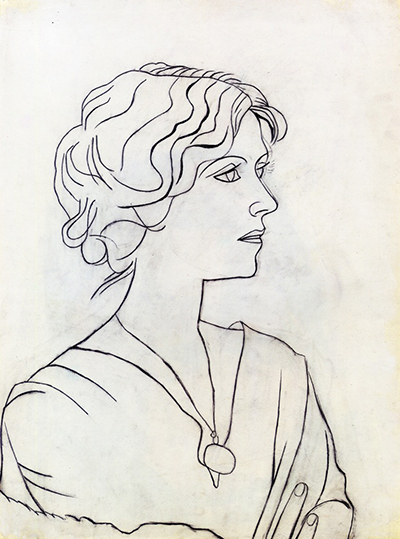One example of this eclectic nature can be see in Portrait of Olga (1920). Known for its sinuous curves, this pencil sketch is a departure from some of his more elaborate and surreal works.
It is also interesting to note that Portrait of Olga was one of the first paintings produced immediately following his Analytical Cubist period. This can perhaps be seen in the use of rather bare lines and a return to more organic forms.
Not only was Picasso and artist and a visionary, but he was equally known for his torrid affairs with many beautiful women. Such an observation is emphasised due to the fact that he chose to capture many of their images on canvas.
The same holds true for Olga Khokhlova. A Russian ballet dancer by profession, she would eventually marry Picasso in 1918 after a brief affair. Soon after, he began using her as a model. Another notable work during this time period is Portrait d'Olga dans un fauteuil (Olga in an Amrchair).
Olga gave birth to their son (Paolo) in 1921 and they would remain close for the next six years. In 1927, Picasso met a French girl by the name of Marie-Thérèse Walter.
They soon began an affair that would last for years. Olga was unaware of his actions and they did not come to light until she learned that Walter had become pregnant with his child in 1935. She immediately filed for divorce and took Paolo to Southern France. Picasso would never adhere to the terms stipulated by French law and therefore, Olga was still technically married to Picasso until his death in 1955.
While beautiful in its own right, there is no denying that there is a certain sombre tone exhibited within Portrait of Olga; particularly around the eyes. As this painting was commissioned soon after their marriage, one has to wonder whether or not Picasso had misgivings from the beginning. It is nonetheless impossible to ignore the talented hand behind this sketch.

